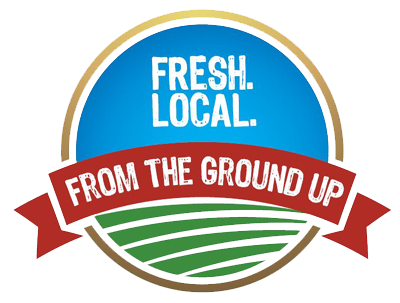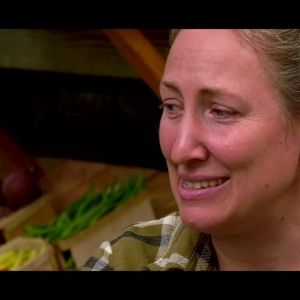Other Ag News: Digging into the House Farm Bill: Part 3
Editor’s Note: This is the third post in a multi-part blog series analyzing the Farm, Food, and National Security Act of 2024 (FFNSA), which was reported out of the House Committee on Agriculture on Friday, May 24. The first post details an overview of the markup process and the bill as a whole, as well as its likely (or unlikely) path to becoming law. The second post explores the FFNSA’s impacts on local and regional food systems. This post provides a deep-dive analysis of the bill’s potential impacts on the farm safety net, farmers’ ability to access land and capital, fair competition, and treatment of food workers. The final post in the series will focus on climate resilience through the lens of how conservation, research, and organic programs fare under the FFNSA.
The Farm, Food, and National Security Act of 2024 (FFNSA) fails to meet the moment for young, small, and diversified farmers, who believe a farm bill should serve all farmers – not only the largest, industrial operations. While there are a handful of proposals that NSAC is pleased to see included, an extended series of misguided provisions in the FFNSA would only perpetuate the inequitable distribution of resources in U.S. farming, exacerbating pressing land access and climate-related challenges.
Commodity Program ReformThe FFNSA’s approach to commodity program reform is woefully shortsighted. It dramatically increases subsidies through the Price Loss Coverage (PLC) and Agricultural Risk Coverage (ARC) programs for industrial commodity farms – a historic investment touted as a solution to replace the need for future ad-hoc disaster assistance. In the long term, it will not because it fails to support farmers in building resilience against the root causes that contribute to worsening losses on their farms.
Price Loss Coverage and Agricultural Risk Coverage
The centerpiece of Chairman Glenn “GT” Thompson’s (R-PA-15) farm bill is an increase in the reference price – or price floor below which a government payment is triggered – by 10-20 percent for commodities covered under PLC, including peanuts, rice, seed, cotton, corn, and soybeans. Reference prices above projected market prices would effectively guarantee annual payments, far from the original intent of farm safety net programs to provide necessary relief in especially tough times, (Section 1101).
While peanut, rice, and cotton farms at present tend to elect most into PLC, corn and soybean operations should receive a boon through enhanced ARC provisions in the FFNSA. The bill raises the ARC revenue-guarantee from 86 to 90 percent and increases the maximum payment rate to 12.5% of the benchmark value, in part determined by heightened reference prices, (Sec. 1105).
ARC and PLC payments are made not according to a farm’s real-time planting, but historical base acres. The National Sustainable Agriculture Coalition (NSAC) views historical base acres as a safeguard against farmers “planting the program,” or planting commodities according to projections each season specifically to trigger payments. The FFNSA would create a one-time opportunity for any farmer to voluntarily update their base acres, allowing many industrial commodity farms – which have, on average, become larger – to expand their acreage eligible for subsidies, (Sec. 1102). Adjusting base acre enrollment, coupled with higher expected payments for commodity programs and evolving market projections, would likely have significant future implications for which producers elect ARC or PLC annually, to capture the highest possible payment.
Eligibility Standards and Payment Limitations
Especially alarming in the FFNSA are provisions to eviscerate income-based eligibility standards and payment limitations which are already loophole-ridden, but originally intended to prevent millionaires and absent landowners from profiting from taxpayer dollars.
- First, the FFNSA exempts any farm that derives at least 75 percent of its Adjusted Gross Income (AGI) from farming from the $900,000 AGI means test. AGI is a net income measure that subtracts farm and other business expenses.
- Second, the FFNSA raises the $125,000 annual commodity program payment ceiling to $155,000 (doubled for married couples, so $310,000) and then adjusts limits annually for inflation. For reference, in 2013, the farm bill payment limit was $50,000, which adjusted for inflation would be $67,000 in 2024 dollars, or well less than half the FFNSA proposed limit.
- Third, and most troubling, the FFNSA extends the current loophole that allows farms organized as joint ventures and general partnerships to reap subsidies without any effective limit to include farms organized as LLCs and S-corporations. If this provision became law, the only farms subject to the statutory payment limit would be farms that are simple sole proprietorships. This would open the door to new and expanded schemes to include multiple non-farming partners and board members in order to run around subsidy limitations, (Sec. 1603, 1604, 1605).
The FFNSA’s payment limit provisions are the polar opposite of the Farm Program Integrity Act (FPIA, S. 2610) introduced by Senators Chuck Grassley (R-IA) and Sherrod Brown (D-OH). Rather than extending the partnership loophole to corporations, the FPIA would close the loophole entirely, while strengthening the payment limitation rules to prohibit payments to all persons not personally and substantially active in farming.
Commodity Credit Corporation
In total, at least $53 billion is needed to pay for FFNSA’s proposed increase in farm safety net spending, according to an estimate from the House Committee on Agriculture. To make the math work, FFNSA cuts $27 billion intended for SNAP and suspends the Secretary of Agriculture’s authority to use the Commodity Credit Corporation (CCC) to respond to emerging needs in agriculture. Despite claims that the CCC restriction would produce $30 billion in savings, per the existing cap on CCC borrowing authority, the Congressional Budget Office found it might be considered to account for just $8 billion due to other spending offsets, (Sec. 1608).
NSAC finds these purported “savings” dubious. It is rooted in a relatively new perception that the CCC is entitlement spending, to be spent annually, by both Republican and Democratic administrations. For instance, the Trump Administration distributed $28 billion to commodity producers disrupted by its trade war with China. The Biden Administration used $3 billion from the CCC to fund the Partnership for Climate-Smart Commodities as well as initiatives such as the Regional Agricultural Promotion Program, the Organic Market Development Grants, the Fertilizer Production Expansion Program, and the Local Food Purchase Assistance Program. Suspending USDA’s authority to use these dollars in order to fund increases in farm subsidies through ARC and PLC will not prevent the future authorization by Congress to expand the cap to meet ad-hoc needs in the next 10 years. For example, this may be determined necessary to respond to another trade war or unforeseeable national disaster, undermining the legitimacy of the idea as a “pay-for.”
Photo credit: USDA, by Lance Cheung Strengthening Crop InsuranceWith only 13 percent of farms insured against worsening floods, droughts, and other disasters, the next farm bill must take steps to expand access to the federal crop insurance program. Unfortunately, the FFNSA would only maintain the status quo, once again leaving small and diversified farms selling to local and regional markets – sometimes misguidedly disparaged as “hobby farms” – behind, exacerbating the program’s structural flaws and incentivizing risky farming behaviors.
Some provisions may at first glance appear to expand access to the federal crop insurance program, but the details reveal otherwise. For example, the FFNSA requires an annual review of challenges to accessing Whole-Farm Revenue Protection (WFRP). Not only is that already standard practice at USDA, but those barriers and corresponding solutions are well-documented, including in a USDA-contracted study already required by the 2018 Farm Bill. Further, the text calls for special emphasis on barriers to access for aquaculture and greenhouses without mention of small, diversified, or direct-to-consumer producers that are still unable to access the program, (Sec. 11015).
The bill also establishes a Specialty Crop Advisory Committee to inform the development and expansion of crop insurance. But without conditions that any of its appointees represent beginning, small, diversified, or organic farmers, it will only reflect the specific needs of industrial specialty crop farms, (Sec. 11001).
Likewise, while the FFNSA offers some additional reimbursements to incentivize crop insurance agents to sell plans to cover specialty crops, the text appears to exclude WFRP by limiting eligibility to plans consistent with an update made by the Risk Management Agency (RMA) between 2011 and 2015 – prior to the establishment of WFRP. Further, the bill authorizes $50 million to private insurance companies in “relief” for insurance plans sold between 2022 and 2024, despite existing subsidization that already amounts to an average of $3 billion annually, (Sec. 11010).
The FFNSA does authorize several new pilot programs, including a hurricane and tropical storm policy and an index-based policy for cold and frost. However, the latter misses the opportunity to enshrine an index-based policy as comprehensive as found in the WEATHER Act (S.3401) and the Save Our Small Farms Act (H.R.8536), (Sec. 11016).
Rather than invest in meaningfully expanding the safety net to farmers who currently lack access, the FFNSA enhances the Supplemental Coverage Option (SCO) for farmers already enrolled in the federal crop insurance program. It raises maximum coverage from 86 percent to 90 percent, increasing the premium discount from 65 percent to 80 percent, and lowering the payment threshold to trigger when losses exceed 10 percent, rather than 14 percent. The silver lining is that the bill appears to require seed cotton producers to choose between the sweetened insurance benefits or ARC or PLC payments, and all other producers who choose to enroll in the SCO cannot also enroll in ARC, although they may still opt into PLC, (Sec. 11005, 11006).
The only provision in FFNSA directed at helping producers not currently enrolled in insurance would expand discounts offered to beginning and veteran farmers, as well as revise RMA’s definition of beginning farmers to include all those with up to 10 years of experience, rather than only five. Unfortunately, this will have minimal impact if it is not paired with more foundational reforms missing from this bill to remove bureaucratic red tape and address the disincentive that agents experience to sell insurance to small and diversified farms. (Sec. 11008)
Equitable Access to Land and CapitalFarming and ranching is one of the hardest careers to pursue, due, in part, to high barriers to entry. That is why it is so important for the next farm bill to help farmers access affordable farmland and finance high upfront startup costs. The FFNSA takes some steps in this direction, and a couple steps back.
Notably, the bill raises the limits that any individual farmer-borrower may owe to a lender for USDA’s Farm Service Agency (FSA) direct and guaranteed operating and farm ownership loans, to keep pace with rising costs of inputs and assets. NSAC supports increases in limits to microloans from $50,000 to $100,000, direct operating loans from $400,000 to $750,000, direct farm ownership loans from $600,000 to $850,000, and guaranteed farm ownership loans from $1.75 million to $3.5 million, (Sec. 5104, 5202, 5203).
However, NSAC opposes raising the guaranteed operating loan limit from $1.75 million to $3 million without conditions that prevent FSA-backed loans from financing the development of new Concentrated Animal Feeding Operations (CAFOs). Further, FFNSA raises these limits without any increase to the total funding authorization of FSA to make these loans, subject to annual appropriations. This could result in bigger loans to fewer farms, (Sec. 5202, 5402).
NSAC supports the authorization of FSA to restructure guaranteed loans into direct loans for distressed borrowers. Yet Chairman Thompson quietly hindered the proposal in his Manager’s Amendment – revealed less than a half-hour before markup and approved by a contested voice vote within minutes. As amended, the final version of FFNSA would only allow FSA to help distressed guaranteed loan borrowers after the borrower is already in default and the lender has initiated liquidation or foreclosure action. This cruelly forces farmers beyond the brink, rather than allowing lenders to work with farmers to prevent the worst-case scenario, (Sec. 5111).
The House bill does take small steps to streamline access to farm ownership loans for beginning farmers, including reducing the experience requirement to be eligible from three years to two years, with a series of conditions where USDA may issue loans to farmers with only one year of experience. To help farmers navigate the rapid turnaround of land sales, the FFNSA also directs USDA to establish a pilot program for farmers to receive advanced pre-approval on farm ownership loans, (Sec. 5102, 5109).
Further, while the bill does not include most provisions from the Fair Credit for Farmers Act (S. 2668, H.R.5296) to reform the imbalanced National Appeals Division (NAD) process, it would at least reform the current standard where individual farmers must carry the burden of proof to challenge their denial by a federal agency. Instead, USDA would need to prove that their decision to deny a loan to a farmer was righteous. That is an important step in the right direction, (Sec. 12205).
The bill meets the low bar of reauthorizing the Farming Opportunities Training and Outreach Grant Program (FOTO), which includes the Beginning Farmer and Rancher Development Program (BFRDP) and the Outreach and Assistance to Socially Disadvantaged and Veteran Farmers and Ranchers Program (2501) as well as moves the management of 2501 from
Office of Partnerships and Public Engagement (OPPE) back into the National Institute of Food and Agriculture (NIFA). While NSAC is pleased to see the program reauthorized, the House dismissed recommendations from many organizations on increasing funding and improving implementation of BFRDP and 2501.
Finally, the bill reauthorizes the Heir’s Property Intermediary Relending Program and authorizes USDA to enter into cooperative agreements to provide legal services to underserved heirs, (Sec. 5108).
Photo credit: USDA, by Lance Cheung Fair Competition and Fair Labor PracticesThe FFNSA fails to include any provisions to address the role that consolidation in the food system plays in squeezing farmers, ranchers, and consumers in an anti-competitive marketplace. While issues of labor are generally outside of the jurisdiction of the House Committee on Agriculture, FFNSA refuses to acknowledge the influence USDA has to address the unique challenges of farmworkers and processing laborers.
There are a series of concerning provisions regarding competition in the meat processing sector (Sec. 12111). These provisions create an exemption within the Packers and Stockyards Act regulations that allows market agencies – inclusive of stockyard owners – to purchase or invest in meatpackers’ operations. While ostensibly this is intended to generate more private investment within western cattle processing operations, this provision could also lead to instances in which the only stockyard owner in the area also has a controlling interest in the only meatpacking operation in the area, leading to vertical integration and coordination along the processing supply chain. This possibility is concerning, especially considering that the FFNSA sets the size limit for the exemption at the point where plants or companies operating in the top quintile of processing could qualify for it.
During FFNSA markup, an amendment was offered by Representative Greg Casar (D-TX-35), utilizing text from the Child Labor Exploitation Accountability Act (H.R. 2822) that would have required the USDA to review contractors and subcontractors for Occupational Safety and Health Administration (OSHA) violations. Under this amendment, if any were found, USDA could no longer contract with them for a duration of 4 years until they had no new labor law violations. H.R 2822 and the Casar amendment were largely oriented towards the increased reporting and enforcement of child and wage labor law violations in the meat processing industry, though the text itself was inclusive of all UDSA contractors and subcontractors and not just procurement. This amendment would not have created a new labor violation law, but simply would have required the USDA to not interact with those parties actively doing so.
This amendment was eventually replaced – due to a secondary amendment approved on a party line vote – with a requirement for a Government Accountability Office (GAO) report on child labor violations. GAO has already recently conducted a study on this same topic. Similar reports have already been done, spanning the last two decades.
The post Digging into the House Farm Bill: Part 3 appeared first on National Sustainable Agriculture Coalition.
Signup for the Ag Newsletter
Get the freshest farm news, events and updates from in and around Cattaraugus County, NY at least once a month! Go signup!
Other ways to stay connected:
Get Involved in Farming
Resources for Starting a Farm in Cattaraugus County
Profile of Cattaraugus County soils
Agriculture Career Exploration
Questions about farming? Find out Who to Call











